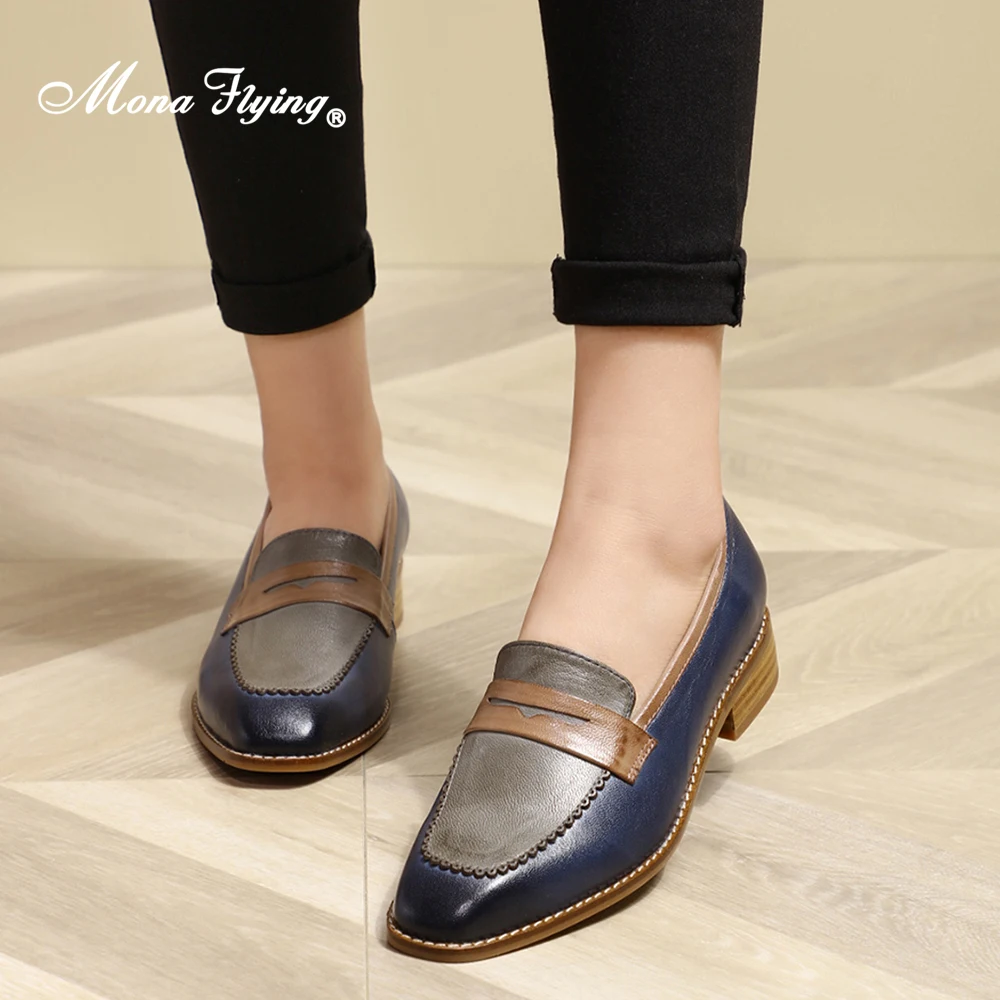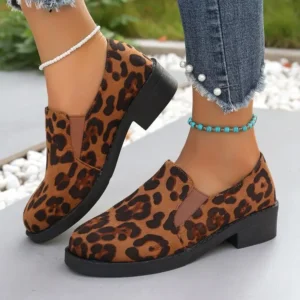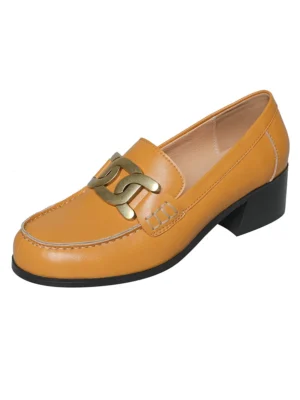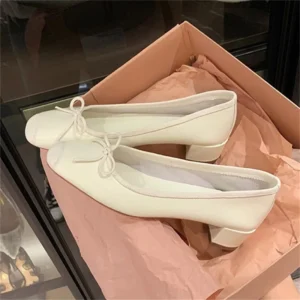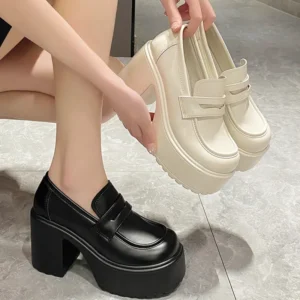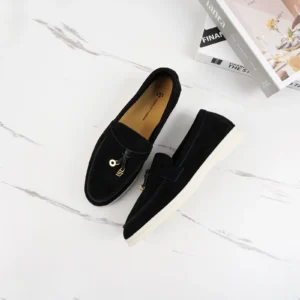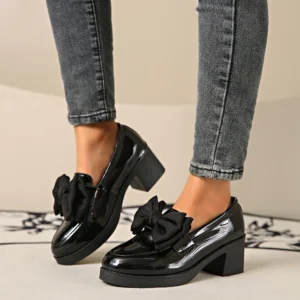Introduction: The Reimagined Modern Loafer
The modern loafer represents a bold reimagining of a footwear classic, transformed from its humble utilitarian beginnings into a versatile fashion statement. Today’s contemporary loafer designs maintain the slip-on convenience and basic structure of traditional models while introducing fresh elements that speak to current aesthetics and lifestyle needs.
What makes a loafer “modern” lies in its innovative approach to proportion, materials, and detailing. These updated versions break free from conventional boundaries with experimental sole heights, unexpected textures, and reimagined silhouettes. The most distinctive modern loafers feature elements like chunky platform soles, squared-off toes, and minimalist hardware that create visual interest while maintaining the loafer’s inherent wearability.
The appeal of modern loafers stems from their remarkable versatility. Unlike their predecessors, which were often confined to specific dress codes, today’s designs transition seamlessly between casual weekend wear, office-appropriate attire, and even elevated evening looks. This adaptability has cemented the modern loafer as an essential in fashion-forward wardrobes.
Perhaps most striking is the visual transformation modern loafers have undergone. What was once a conservative style has evolved into a vehicle for bold personal expression through square toe loafers modern looks and other contemporary interpretations. This evolution represents more than just aesthetic changes—it speaks to broader shifts in how we approach fashion functionality and self-expression through contemporary loafer design elements.
The Evolution of the Loafer: From Traditional to Contemporary
The loafer’s journey from practical footwear to fashion statement spans nearly a century of style evolution. Originally inspired by Norwegian fishermen’s slip-on shoes, the loafer first gained mainstream popularity in the 1930s when G.H. Bass introduced the penny loafer—a design featuring a distinctive slot that could hold a coin. This practical, understated style became synonymous with preppy American fashion throughout mid-century America.
The 1950s and 60s saw loafers adopted by diverse style tribes, from Ivy League students to Hollywood rebels, cementing their status as versatile footwear. The 1970s introduced more decorative elements, with horsebit hardware and tassels becoming signature embellishments that signaled a shift toward more fashion-forward interpretations.
The real transformation began in the 1990s when designers began experimenting with proportions and materials. Traditional penny loafers were reimagined with chunkier soles and bolder silhouettes, breaking away from their conservative roots. The early 2000s saw further experimentation as luxury houses began incorporating unexpected materials like patent leather, metallics, and exotic textures into loafer designs.
Today’s classic penny loafers bear the DNA of their predecessors while incorporating modern sensibilities in their construction and styling. This evolution reflects broader cultural shifts toward fashion that balances tradition with innovation and comfort with style.
The most significant turning point came when designers began treating loafers not as isolated classics but as canvases for creative reinterpretation. This approach opened the door for the diverse range of contemporary loafer designs we see today—from minimalist versions stripped of ornamentation to maximalist styles featuring exaggerated proportions and unexpected details.
Key Elements of Modern Loafer Design
What exactly makes a loafer “modern” comes down to five key design elements that distinguish contemporary versions from their traditional counterparts. These components work together to create distinctive styles that speak to current fashion sensibilities while maintaining the loafer’s foundational identity.
The transformation begins with innovative sole designs that dramatically alter the loafer’s profile and proportions. This foundation supports contemporary silhouettes that reshape how the shoe appears on the foot, particularly through square toe vs round toe fashion choices that create very different visual effects.
Material selection plays a crucial role in modernizing loafers, with designers employing everything from high-gloss finishes to unexpected textures. These material choices work in harmony with hardware and embellishment decisions—ranging from minimalist approaches to bold statement pieces. Finally, an expanded color palette breaks the boundaries of traditional neutral tones.
Together, these five elements—soles, silhouettes, materials, hardware, and colors—form the building blocks of modern loafer design, each contributing to the shoe’s overall contemporary character. The following sections examine each element in greater detail, showing how they transform this classic footwear staple into its modern incarnation.
Innovative Sole Designs: The Foundation of Modern Style
The sole of a modern loafer often serves as its most defining contemporary feature, dramatically transforming the shoe’s overall appearance and wearability. Today’s designs have moved far beyond the traditional thin leather sole to embrace a range of innovative interpretations:
Chunky soles create bold visual impact while adding height and comfort. These substantial platforms make an immediate statement and have become synonymous with contemporary loafer styling.
Lug soles incorporate deep treads and rugged textures inspired by utility footwear, bringing an unexpected edge to the traditionally refined loafer silhouette.
Platform and flatform styles feature dramatic height with either tapered or consistent thickness from heel to toe, creating a striking vertical lift that transforms the loafer’s proportions.
Cleated and exaggerated welts emphasize the boundary between upper and sole with pronounced detailing, adding architectural interest to the design.
Modern traditional soles maintain a lower profile but incorporate contemporary materials like rubber or EVA for improved comfort and durability.
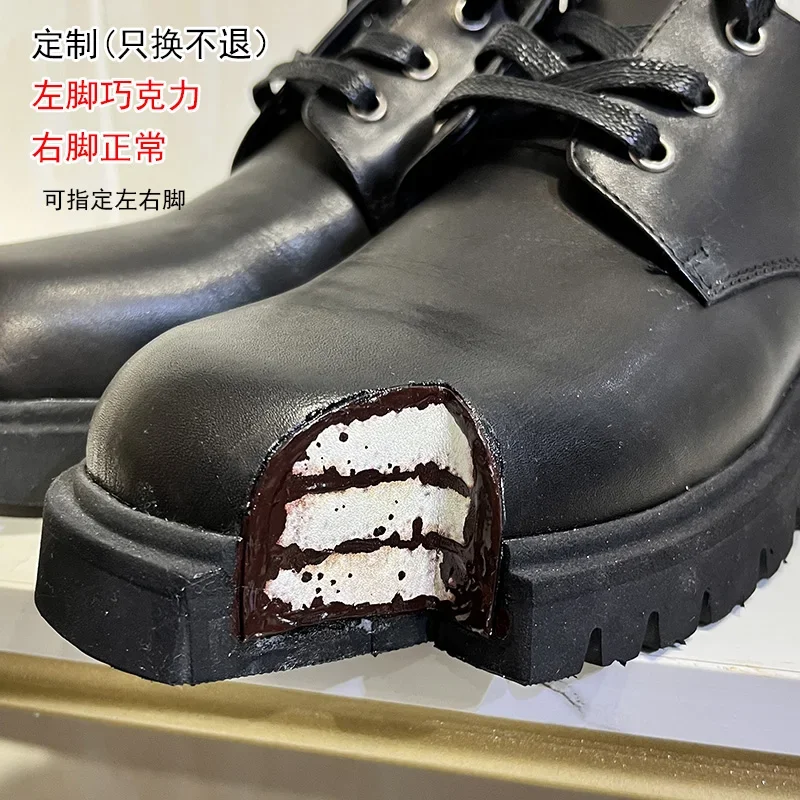
These innovative foundations don’t just change how loafers look—they transform how they feel and function. The substantial presence of women’s platform chunky loafers provides stability and comfort for all-day wear while creating a fashion-forward silhouette that pairs easily with contemporary clothing.
The sole’s design significantly influences the loafer’s overall character, determining whether it reads as edgy and bold or subtle and refined. This foundation element sets the tone for the entire design, influencing everything from the wearer’s stance to the shoe’s versatility across different settings.
Silhouettes and Toe Shapes: Redefining the Loafer Profile
The silhouette of a modern loafer—particularly its toe shape—dramatically influences its overall aesthetic and wearability. Contemporary designs have moved beyond traditional rounded moc toes to embrace diverse shapes that create distinct visual impressions:
Square toes introduce angular, architectural lines that immediately signal a contemporary approach. This geometric shape creates a bold statement that feels thoroughly modern and pairs particularly well with straight-leg pants and minimalist styling.
Almond and softly rounded toes update classic profiles with subtle refinement, offering a middle ground between traditional shapes and more experimental designs. These versatile shapes complement nearly any outfit style.
Pointed toes bring unexpected sleekness and elongation to loafer designs, creating an elegant silhouette that works beautifully with tailored pieces and evening wear.
Modern interpretations of apron and moc toes maintain references to traditional loafer construction while introducing cleaner lines and updated proportions.
The women’s square toe flat loafers collection exemplifies how a contemporary toe shape can transform the entire character of a loafer, making it feel distinctly modern while maintaining its essential comfort and slip-on convenience.
Beyond the toe, overall silhouette considerations include the vamp height (how high the shoe rises on the foot), heel counter design, and the shoe’s overall proportions. These elements together determine how a loafer balances traditional references with modern sensibilities—and significantly impact how the shoe pairs with different clothing silhouettes.
Material Innovation: Beyond Traditional Leathers
Material selection represents one of the most transformative elements in modern loafer design, with contemporary versions exploring far beyond traditional smooth leather finishes. Today’s innovative approaches include:
High-shine finishes and patent leathers create dramatic light reflection and glossy surfaces that bring luxurious visual impact to loafer designs. These polished finishes add sophistication and can elevate even chunky, casual silhouettes.
Textured options like suede, nubuck, and pebbled leathers introduce tactile interest and casual softness. These materials create rich visual depth and often feature in monochromatic designs where texture becomes the primary focus.
Unique texture treatments including croc-embossing, pony hair, animal prints, and woven leather patterns bring unexpected visual interest to modern loafers. The popularity of women’s leopard print loafers demonstrates how these pattern treatments can transform a simple silhouette into a statement piece.
Sustainable and vegan alternatives respond to growing ethical concerns while offering innovative aesthetics. These materials range from sophisticated plant-based leathers to technical fabrics with unique properties.
Metallic, iridescent, and specialty finishes push boundaries with light-catching surfaces and unexpected color shifts that create distinctive visual effects as the wearer moves.
Material innovation extends beyond aesthetics to performance, with many contemporary loafers incorporating materials that enhance comfort, durability, and versatility. Water-resistant treatments, breathable membranes, and technical fabrics elevate modern loafers from simply stylish to genuinely functional for today’s lifestyle demands.
The material composition also significantly impacts a loafer’s formality level and appropriate styling contexts—from casual weekend wear to polished office attire to evening statements.
Hardware and Embellishments: From Minimalist to Statement Pieces
Hardware and decorative elements have undergone significant evolution in modern loafer design, ranging from subtle minimalism to bold statement features that define the shoe’s character:
Clean, minimalist designs completely eliminate visible hardware in favor of uninterrupted surfaces and streamlined aesthetics. These pared-back approaches emphasize material quality and silhouette.
Bold statement hardware includes oversized chains, prominent buckles, and exaggerated metallic details that become the focal point of the design. These elements transform traditional loafer shapes into contemporary fashion statements.
Modern reinterpretations of classic elements update traditional features like tassels, penny keepers, and kilties with unexpected proportions, materials, or placement. These designs honor heritage while introducing fresh perspectives.
Innovative embellishments including pearls, studs, contrasting stitching, and embroidery bring unexpected decorative elements to loafer design, creating distinctive visual interest.
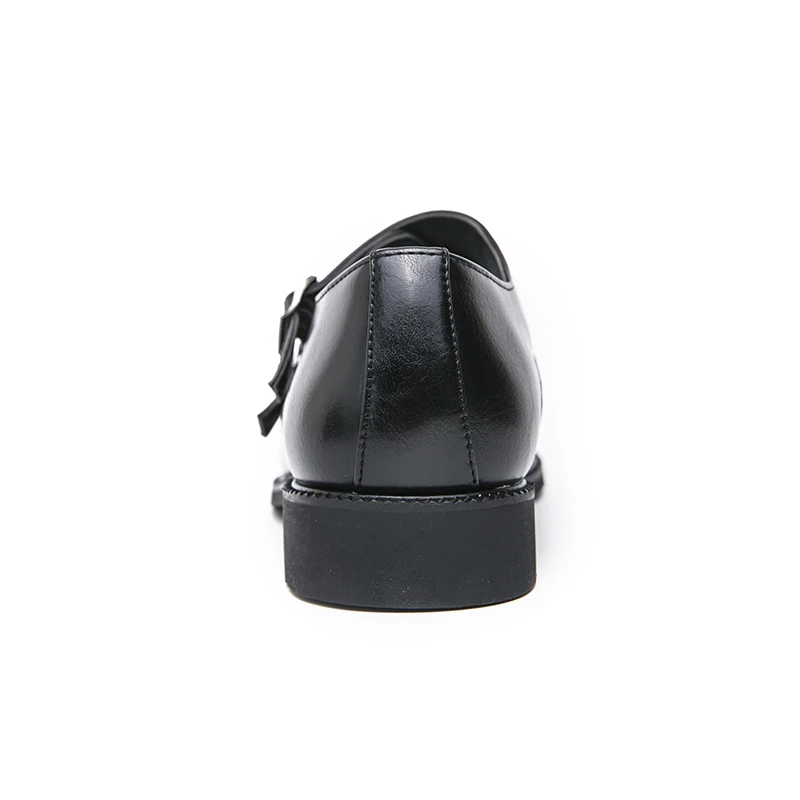
The women’s monk strap loafers collection exemplifies how hardware can transform a loafer’s character, with adjustable buckles that add both visual interest and functional fit customization. These hardware elements bridge traditional menswear influences with contemporary women’s styling.
Hardware choices significantly impact a loafer’s formality level and appropriate contexts—minimal hardware creating versatility across settings, while bold statement pieces define the shoe as a focal point in an outfit. The material finish of hardware (antiqued brass, polished silver, matte black) further influences its visual integration with the overall design.
The Modern Color Palette: Breaking Traditional Boundaries
Color selection in modern loafer design has expanded dramatically beyond the traditional brown and black palette, embracing a spectrum of hues that reflect contemporary fashion sensibilities:
Updated neutrals include rich burgundies, deep olives, sophisticated taupes, and complex grays that maintain versatility while offering more visual interest than conventional options. These colors work seamlessly with diverse wardrobes.
Bold and saturated statement colors like electric blue, vibrant red, and emerald green transform loafers into focal point accessories that energize simple outfits. These confidence-inspiring hues reflect the modern loafer’s evolution into an expressive fashion piece.
Subtle pastels and muted tones offer softer alternatives that maintain sophistication while introducing color. These approachable options pair easily with both neutrals and other colors.
Color-blocked and two-tone designs combine multiple colors within a single shoe for distinctive visual interest. These combinations range from subtle tone-on-tone approaches to high-contrast pairings that create dramatic impact.
Color choices significantly impact a loafer’s versatility, seasonality, and styling potential. While bold colors make stronger statements, they may limit pairing options, while sophisticated neutrals offer greater flexibility across different outfits and occasions.
Contemporary color approaches often consider the entire design holistically, with hue selections that complement specific materials and hardware for a cohesive overall aesthetic. This thoughtful integration of color with other design elements distinguishes truly sophisticated modern loafer designs.
Current Trends in Modern Loafer Design
The modern loafer landscape continues to evolve, with several distinctive trends currently shaping contemporary designs. These trends reflect broader fashion movements while honoring the loafer’s fundamental comfort and versatility:
Chunky loafers with exaggerated proportions remain at the forefront of modern design, featuring substantial soles that create bold visual impact and height. These dramatic interpretations have become everyday staples rather than statement pieces, indicating a significant shift in mainstream footwear proportions.
Platform styles with dramatic height take the chunky trend further with substantial elevation that transforms the wearer’s stance and the shoe’s visual presence. These designs often incorporate clever comfort features that make their impressive heights surprisingly wearable.
Heeled loafer variations introduce everything from modest block heels to more dramatic sculptural shapes, bringing unexpected elevation to the traditionally flat loafer silhouette. These hybrids offer sophisticated options for occasions requiring more formal footwear.
“Quiet luxury” minimalist approaches focus on exceptional materials and subtle detailing rather than visible branding or trend-driven features. These refined interpretations emphasize craftsmanship and longevity over seasonal statements.
Backless loafers and mule adaptations combine the front design of traditional loafers with an open heel for easy on-off wearability and relaxed styling. These hybrid designs have gained significant popularity for their casual versatility.
Hybrid designs blend loafer elements with features from other footwear styles, creating innovative crossovers like loafer-sneakers, loafer-boots, and even loafer-inspired sandals. These experimental designs push boundaries while maintaining core loafer identity markers.
Sustainability-focused designs incorporate eco-friendly materials, responsible production methods, and timeless styling intended for longevity rather than seasonal replacement. These conscious approaches reflect growing consumer demand for ethical fashion choices.
These trends demonstrate how loafer design continues to incorporate innovations in footwear design comfort without sacrificing style. The most successful contemporary interpretations balance trend-driven elements with the enduring comfort and versatility that have made loafers perennial favorites.
Styling Modern Loafers: Versatility Across Occasions
One of the most appealing aspects of modern loafers is their remarkable versatility across different styling contexts. Unlike many trendy footwear options that serve limited purposes, contemporary loafer designs transition effectively between casual, professional, and even elevated settings with thoughtful styling.
This adaptability stems from the loafer’s unique position between formal and casual footwear traditions—originally designed for leisure but eventually accepted in more formal contexts. Today’s modern interpretations build on this versatility with designs that can be dressed up or down depending on their specific details and how they’re styled.
The following sections explore three key styling approaches for modern loafers: casual everyday pairings that maximize comfort and effortless style; business-appropriate combinations that balance professionalism with contemporary edge; and elevated evening options that transform loafers into sophisticated statement pieces.
Each styling context requires consideration of the specific loafer design—its sole height, material, hardware, and overall silhouette—to create coherent, balanced outfits. The beauty of modern loafer styling lies in this flexibility, allowing the same pair to serve multiple functions within a well-curated wardrobe.
Casual and Everyday Styling
Modern loafers excel in casual settings, where they elevate relaxed outfits with polished structure while maintaining comfortable wearability. These everyday styling approaches make the most of contemporary loafer designs:
Pairing with jeans creates an effortless smart-casual look, with different jean styles creating distinct effects. Chunky loafers balance perfectly with straight-leg and wide-leg jeans, while sleeker designs complement skinny and tapered styles. Learning how to style jeans with loafers opens up countless outfit possibilities for everyday wear.
Combining with shorts and skirts introduces interesting proportion play, particularly with chunky loafer styles that create visual weight below. Mini and midi skirt lengths work especially well, creating balanced silhouettes that feel both feminine and structured.
Styling with casual knitwear and oversized shirts creates textural contrast between soft, flowing fabrics and the structured loafer silhouette. This juxtaposition epitomizes modern casual styling—comfort-focused but intentionally composed.
Executing the “socks and loafers” trend adds playful interest through contrast and layering. Options range from subtle thin trouser socks to bold statement styles with patterns or ribbing. This styling approach works particularly well with chunky platform designs and cropped pant lengths that showcase the sock detail.
The key to successful casual loafer styling lies in balancing proportions—chunky loafers generally pair best with more substantial clothing silhouettes, while sleeker designs complement more tailored casual pieces. Seasonal adaptations include bare ankles in warmer months and layered socks when temperatures drop.
Modern loafers bring structure and intentionality to casual outfits without sacrificing comfort, making them ideal for elevated everyday wear across diverse settings from coffee runs to casual workplaces to weekend social gatherings.
Business and Professional Styling
Modern loafers offer sophisticated alternatives to traditional heels and flats in professional settings, providing comfort without sacrificing polish. These business-appropriate styling approaches work particularly well:
Pairing with tailored trousers and suiting creates a contemporary professional look that balances traditional formality with modern comfort. Cropped trouser lengths work especially well with loafers, creating a clean line that showcases the shoe. Full-length trousers should break just slightly at the loafer’s vamp for proper proportion.
Combining with pencil skirts and midi dresses introduces structured footwear that grounds these silhouettes without the formality of pumps. This pairing works particularly well with minimal hardware loafers in polished leather finishes.
Balancing contemporary loafer styles with professional dress codes requires selecting appropriate design details. In conservative environments, lower-profile soles and minimal hardware in neutral colors maintain professional standards, while creative workplaces allow for more experimental styles.
The ultimate guide to women’s loafers for office wear emphasizes selecting styles that match your workplace culture while providing all-day comfort. Materials play a crucial role in professional settings—smooth leather or suede in neutral colors offers the greatest versatility, while patent finishes add sophistication for more formal business contexts.
For professional styling, hardware should typically be understated rather than statement-focused, and sole heights should remain moderate unless the workplace culture embraces more fashion-forward interpretations. The most successful professional loafer styling creates a balance between contemporary design and appropriate formality.
Elevated and Evening Styling
Perhaps most surprisingly, modern loafers have found their place in elevated and evening contexts, offering sophisticated alternatives to traditional formal footwear options. These styling approaches transform loafers into statement pieces for special occasions:
Pairing with slip dresses and silk skirts creates an interesting tension between the structured loafer and flowing, luxurious fabrics. This juxtaposition feels thoroughly modern and offers comfortable elegance for events that involve standing or walking.
Incorporating loafers into formal outfit compositions works particularly well with loafers featuring distinctive hardware, rich materials like velvet or patent leather, or embellishments that elevate them beyond everyday styles. These special details help loafers transition into more formal contexts.
Using statement loafers as focal points allows the shoes to become the centerpiece of an otherwise simple ensemble. Bold colors, metallic finishes, or distinctive embellishments draw attention while the outfit remains understated.
The key to elevated loafer styling lies in selecting designs with refined details and pairing them with pieces that create cohesive sophistication. Material selection becomes particularly important—high-shine finishes, luxurious textures, and distinctive hardware help signal the loafer’s elevated status.
This approach to loafer styling represents perhaps the most significant evolution from their traditional role, demonstrating how contemporary design has transformed this once-casual footwear category into a versatile option suitable for even special occasions.
Leading Brands in Modern Loafer Design
The landscape of modern loafer design features diverse brands across different market positions, each bringing distinctive approaches to contemporary interpretations. These brands drive innovation while delivering different price-to-value propositions:
Luxury fashion houses lead bold design experimentation with architectural soles, unexpected materials, and distinctive hardware that often set trends for the broader market. These premium brands emphasize exceptional craftsmanship and unique design perspectives, with loafers that function as wearable fashion statements. Their designs frequently appear in editorial styling and influence wider footwear trends.
Contemporary mid-range brands balance innovation with accessibility, offering thoughtful modern interpretations at more approachable price points. These brands often excel at incorporating trend-driven elements while maintaining comfort and versatility. Their designs typically feature quality materials and construction details that support regular wear, making them practical investments for fashion-conscious consumers.
Accessible brands bring modern loafer trends to wider audiences through attainable price points and widely available distribution. These brands respond quickly to emerging design directions with versions that capture key visual elements while prioritizing comfort and wearability. Their interpretations often focus on the most distinctive trend elements—like chunky soles or square toes—while simplifying other aspects of the design.
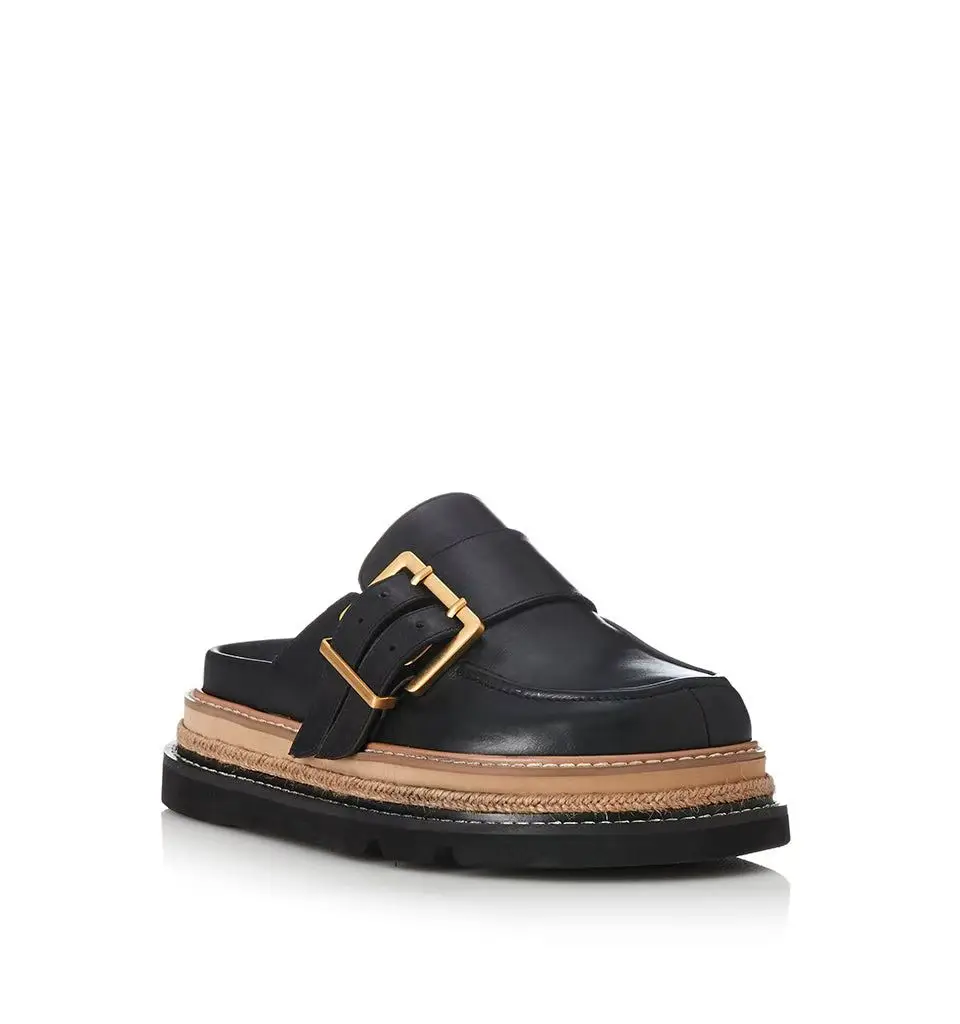
The women’s loafer mules collection demonstrates how different brands interpret this popular hybrid style, with variations in hardware, heel design, and material selection creating distinctive expressions of the same fundamental concept.
Artisan Haul curates selections from quality-focused brands that balance current design trends with long-term wearability and comfort. Their expert team evaluates each loafer style for material quality, construction standards, and comfort features before adding it to their carefully considered collection.
Women's Comfortable Flat Loafers, Women's Leopard Print Loafers, Women's Low Heel Loafers
$82.50 Select options This product has multiple variants. The options may be chosen on the product pageWomen's Block Heel Loafers, Women's Heeled Penny Loafers, Women's Monk Strap Loafers
$194.04 Select options This product has multiple variants. The options may be chosen on the product pageWomen's Block Heel Loafers, Women's Square Heel Loafers, Women's Square Toe Flat Loafers
Price range: $73.61 through $86.41 Select options This product has multiple variants. The options may be chosen on the product pageWomen's Black Platform Loafers, Women's High Heel Loafers, Women's High Platform Loafers, Women's White Platform Loafers
$106.67 Select options This product has multiple variants. The options may be chosen on the product pageWomen's Loafer Mules, Women's Suede Flat Loafers
$190.23 Select options This product has multiple variants. The options may be chosen on the product pageWomen's Black Heeled Loafers, Women's Black Platform Loafers, Women's Block Heel Loafers, Women's Chunky Heel Loafers
$72.58 Select options This product has multiple variants. The options may be chosen on the product page
The most innovative brands in modern loafer design share a commitment to reimagining this classic footwear category while honoring its fundamental comfort and versatility. Whether through bold experimentation or subtle refinement, these brands continue pushing loafer design forward while maintaining the essential qualities that have made this footwear style enduringly popular.
How to Choose Your Perfect Modern Loafers
Selecting the ideal modern loafers requires balancing personal style preferences with practical considerations about fit, quality, and versatility. This thoughtful approach ensures your selection will serve you well across different contexts:
Assess personal style and wardrobe needs by considering your typical outfits and how different loafer designs would complement them. Chunky styles work well with casual, relaxed clothing, while sleeker designs offer greater versatility across formal and casual contexts. Choose a style that aligns with how you actually dress rather than aspiring to an entirely new aesthetic.
Evaluate comfort features including footbed cushioning, flexibility, weight, and internal construction. Quality modern loafers should feature supportive insoles, properly finished interiors without rough edges, and materials that will mold to your foot over time. Always try loafers with the type of socks (or no socks) you plan to wear with them.
Understand material characteristics including how they will wear over time, maintenance requirements, and suitability for your lifestyle. Smooth leathers develop a patina with wear but may show scratches, while suede offers rich texture but requires protection from moisture. Select materials that match your willingness to perform regular care.
Balance trend-driven designs with long-term wearability by considering which contemporary elements have staying power versus which might feel dated quickly. Features like square toes and moderate chunk have demonstrated longevity, while extreme proportions or highly specific details may have shorter trend cycles.
Shopping strategies for finding quality options include examining stitching consistency, testing flexibility and weight, and checking interior construction. Quality loafers should feel substantial but not heavy, with secure attachment between uppers and soles, and consistent stitching throughout.
When evaluating the best square toe loafers or other modern styles, pay particular attention to how the shoe fits across the widest part of your foot. Unlike laced shoes, loafers cannot be adjusted for width, making proper fit especially important for comfort. Many quality brands offer half-sizes and multiple width options to achieve optimal fit.
The ideal modern loafers should strike a balance between contemporary design, personal style alignment, comfort for your specific foot shape, and appropriate durability for your wearing frequency. These considerations ensure your selection will become a versatile, long-lasting addition to your footwear collection.
Frequently Asked Questions About Modern Loafers
Are chunky loafers still in style?
Yes, chunky loafers remain firmly in style and have evolved beyond trend status into wardrobe staples. Their silhouette has been embraced across diverse fashion aesthetics, from minimalist to maximalist styling. While specific details like hardware and toe shapes continue evolving, the chunky sole proportion has demonstrated remarkable staying power.
What exactly makes a loafer “modern”?
A modern loafer typically incorporates contemporary design elements like updated proportions (chunky soles, platform heights, squared toes), innovative materials, minimalist or statement hardware, and versatile styling potential. The distinction lies in how these shoes reinterpret traditional loafer elements through a contemporary lens rather than strictly adhering to heritage styling.
How do I choose between different sole types?
Select sole types based on your lifestyle needs and aesthetic preferences. Chunky and lug soles offer visual impact and height but add weight; flatforms provide height with a different silhouette; traditional soles offer flexibility and lightweight comfort. Consider where you’ll wear them most—chunkier styles for casual settings, sleeker soles for versatility across occasions.
Can modern loafers work for formal occasions?
Yes, certain modern loafer styles can work beautifully for formal occasions, particularly those featuring refined materials like patent leather or velvet, minimal or elegant hardware, and sleeker proportions. The key is selecting designs with sophisticated detailing and pairing them with appropriately formal attire that creates a cohesive look.
What’s the best way to style socks with modern loafers?
The most versatile approach pairs neutral trouser socks with loafers for subtle sophistication, while statement socks in contrasting colors or patterns create more fashion-forward looks. Sock weight should complement the loafer style—thinner socks with sleeker designs, chunkier knits with substantial loafers. The sock edge should hit above the ankle bone for the most flattering proportion.
How should modern loafers fit?
Modern loafers should fit securely without pinching or slipping. When new, they should feel snug but not tight across the widest part of your foot, with approximately a quarter to half inch of space beyond your longest toe. Quality leather loafers will stretch slightly with wear, primarily in width rather than length. Your heel should stay securely in the shoe when walking without excessive slipping.
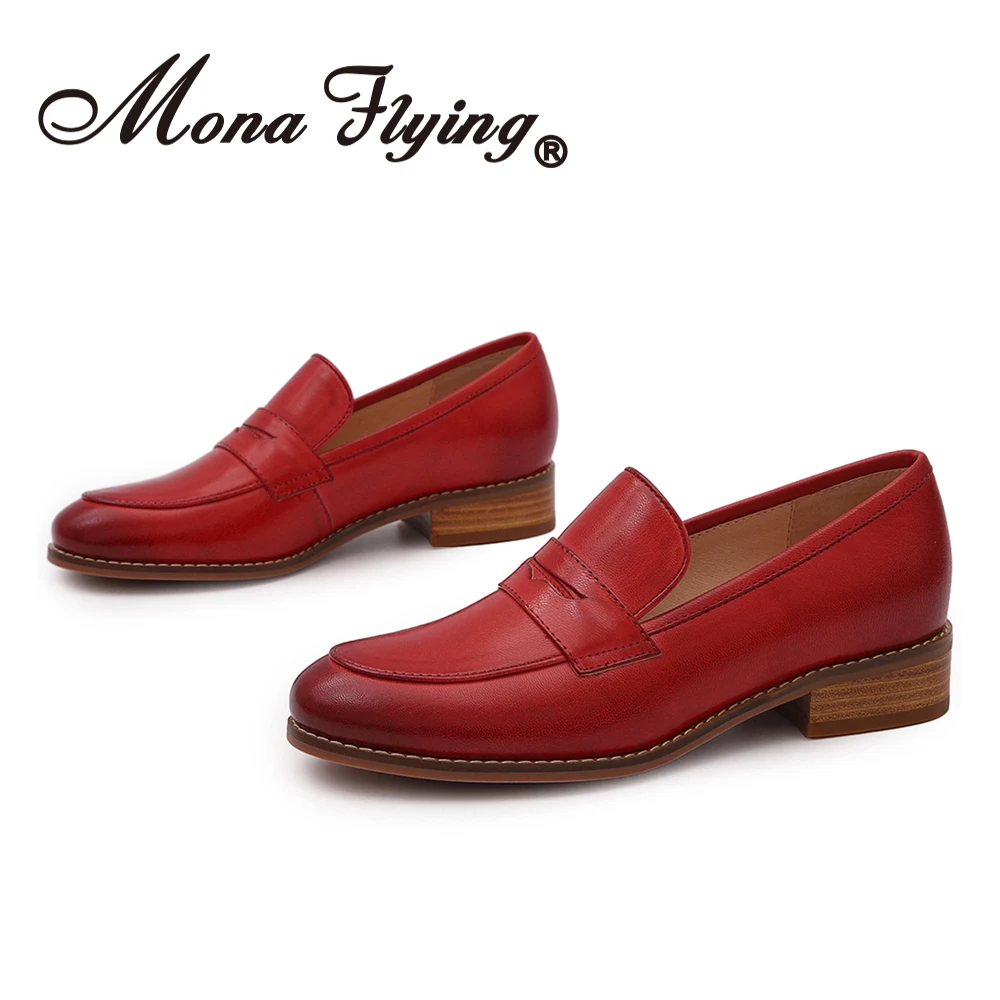
Caring for Your Modern Loafers
Proper maintenance significantly extends the life of modern loafers, preserving both their appearance and comfort. Tailoring care routines to specific materials ensures optimal results:
Leather care for smooth finishes includes regular dusting, occasional cleaning with appropriate leather cleaners, and conditioning 3-4 times yearly to prevent drying and cracking. Allow leather loafers to rest between wearings with shoe trees inserted to maintain shape and absorb moisture. Address minor scratches with color-matched polish or cream.
Suede and nubuck protection starts with preventative treatment using specialized protector spray before first wear and reapplying seasonally. Clean with a suede brush to remove surface dirt, working in one direction to avoid damaging the nap. Address stains immediately with specialized suede erasers or cleaners designed specifically for these delicate textures.
Patent leather cleaning requires gentle approaches using a soft cloth dampened with mild soap and water, followed by buffing with a clean, dry cloth to restore shine. Avoid harsh chemicals that can damage the glossy finish, and store patent loafers with tissue paper to prevent sticking and creasing.
Vegan material care varies by specific composition but generally involves regular cleaning with mild soap and water, avoiding harsh chemicals that may break down synthetic materials. Apply appropriate conditioners designed specifically for synthetic leathers to prevent drying and cracking over time.
Understanding long-term leather footwear care practices helps preserve your investment in quality loafers. Proper storage significantly impacts longevity—store loafers with supportive shoe trees to maintain shape, use dust bags to protect from light and dust, and ensure adequate air circulation to prevent moisture damage.
Preventative care proves particularly important for modern loafers with distinctive design elements. Protect hardware from tarnishing by storing carefully and avoiding exposure to moisture or harsh chemicals. For platform and chunky styles, regularly check for sole separation and address any issues promptly before they worsen.
With proper care tailored to their specific materials and construction, quality modern loafers can provide years of stylish service, making them worthy wardrobe investments that continue looking fresh through changing fashion cycles.

